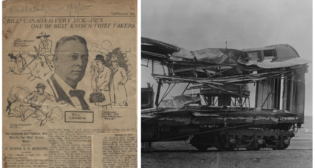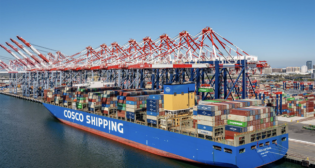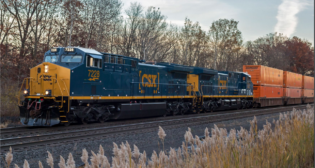
How CSX Defines ‘Active Crew Management’
Written by William C. Vantuono, Editor-in-Chief
CSX photo
FROM THE EDITOR, RAILWAY AGE JULY 2023 ISSUE: Operating a Class I network is arguably one of the most complex tasks in railroading. In my humble opinion as an “informed observer,” the single-most difficult part of operations is crew management.
Our Midyear Report contains extensive excerpts from a recent interview Loop Capital Managing Director Rick Paterson conducted with CSX Executive Vice President Operations Jamie Boychuk, who also shared a lot of detail about how he and his operating team approach crew management, as it relates to hiring, training, deployment and retention. I thought that portion of the interview was worth a separate read:
“Railroads seem to get into trouble with crew capacity deficits—triggering meltdowns—at two points in the business cycle,” Paterson said. “The first is early in economic recoveries, when companies are coming out of a recession and recalling crews that were furloughed going into the recession. If the volume rebound is stronger or earlier than expected or the crew recall rate lower than expected, it’s game over. This, broadly, explains the 2022 service crisis. In December, Norfolk Southern introduced a more conservative crew management strategy where future furloughs will be substantially less, with surplus crews sent to training to learn to be engineers until redeployment. This was an elegant solution we hoped would promulgate through the industry. Has CSX adopted a similar strategy?”

“This is a concept we’ve talked about at CSX for some time,” Boychuk answered. “I’ve spoken about how critical it is for us to build up our train and engine workforce and, just as important, make sure that we are prepared with the resources to handle all the traffic that we know comes back to us on a market upturn.
“We actively manage our T&E employees to deliver the best possible performance of the railroad over the long term. We re-started engineer training this year and will continue to do so. We have offered relocation packages to some employees to work at locations where we continue to hire and have the need for more people.
“We also dive into the causes of lost crew time. We run a balanced plan, so we should have minimal crews taxiing from one location to another to be in place for a train. Any extra crew we use, whether it is a recrew, a yard extra or an extra local, are reviewed throughout the day by the network center and the field ops team. We also closely measure the amount of time our crews are spending in a hotel. If we see a location where crews are spending too much time away from their home terminal, we dig in and find out what we need to adjust so our people can be turned back faster and get back home.
“If we face a situation where we temporarily have surplus crews, we can always pull back our hiring pipeline. Keep in mind that we have been seeing a 10% attrition rate across the board. At the same time, we will not create jobs just to keep people busy. This would take a step backwards with the progress that has been made over the past six years.”
From where I sit, this looks like a solid, long-term approach. Keep up the good work, CSX!



